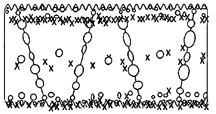Thursday, February 12th, 2009
CaliSolar is ramping production of upgraded metallurgical-grade silicon (UMG-Si) solar cells and has selected Eyelit’s manufacturing software suite to support its new fab next to its headquarters in Sunnyvale, California. CaliSolar is a private company claiming 15% conversion efficiency from cell made using 100% UMG-Si feedstock that undergoes purification at both the ingot and wafer levels.
Eyelit’s solutions will be used to track material starting with raw silicon and including ingot, brick, wafer and PV solar cell production along with control over CaliSolar’s equipment and other key assets. Eyelit software will provide tool monitoring, management of calibration and preventative maintenance, as well as real-time statistical process control (SPC) and deviation management. PV-Tech has more on information about this new business for Eyelit.
CaliSolar buys MG-Si feedstock and casts ingots, cuts and treats wafers, and manufactures cells. The company is the exclusive licensee of a UC Berkeley patent in UMG-Si that is based on research by CaliSolar founder Eicke Weber, and has filed additional patents covering fundamental methods to purify Si. Using basic materials science principles of thermodynamic stability of phases, thermally-activated diffusion, and gettering of impurities, the company has staked claims to very fundamental principles of UMG-Si fab technology. Since doping, annealing, and etching are standard unit processes that are easily control, the integrated flow should relatively easy to control using Eyelit’s MES.

Schematic cross-section of a wafer-based UMG-Si process showing saw-damage and one buried dopant layer to getter impurities prior to etching (source: US Patent Application 20080157241)
Details of the annealing/gettering processes have been disclosed in patent applications. They pull Si ingots out of two-phase melts. Wafer-based gettering at CaliSolar is based on the understanding that wire-saw damage is not a problem but an opportunity. The many defects on the surface act as mechanical getters for bulk impurities under appropriate annealing conditions. Near-surface gettering can be greatly enhanced through the use of sruface dopants such as B, P, Fe or other metals. After annealing, the dopants form a buried region (see figure) below the saw-damage, and etching (presumably wet) ~10µm removes these region to leave behind pure-enough Si for efficient PV cells. CaliSolar could not be reached for comment on the purity increases associated with each of it’s fab steps. –E.K.
Tags: anneal, efficiency, etch, getter, MES, patent, PV, Si, UMG
